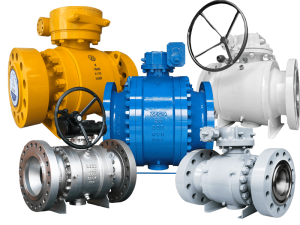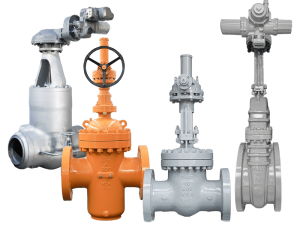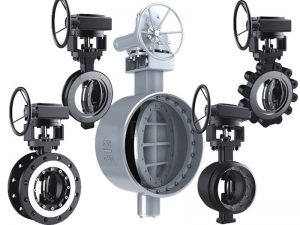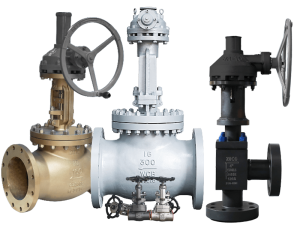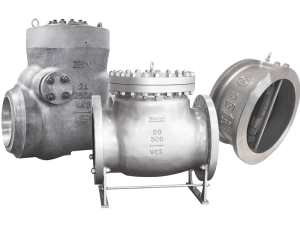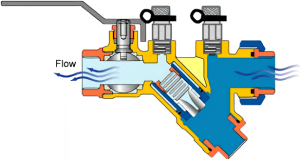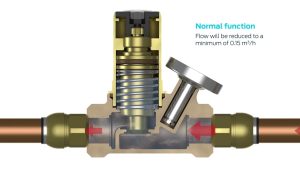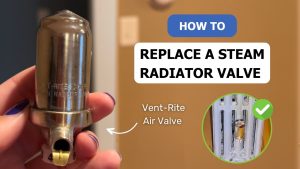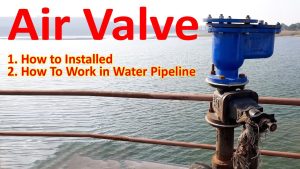Bei der Auswahl von Ventilen für industrielle Anwendungen stößt man oft auf geheimnisvoll klingende Bezeichnungen wie "wcb-Ventil". Aber was genau bedeutet wcb, und warum ist es bei der Auswahl von Ventilen wichtig?
In diesem umfassenden Leitfaden als professioneller WCB-Ventil Hersteller werde ich wcb-Ventile entmystifizieren, indem ich erkläre, was sie sind, warum sie verwendet werden und wie Sie feststellen können, ob ein wcb-Ventil für Ihre Bedürfnisse geeignet ist.
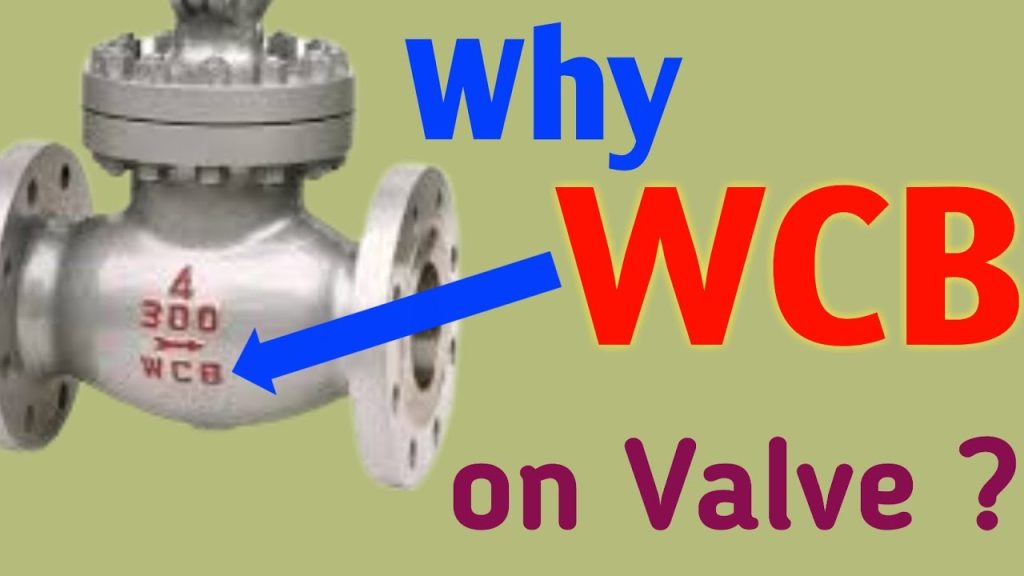
Inhaltsübersicht
Was ist ein WCB-Ventil?
WCB steht für "schweißbarer Stahlguss, Güteklasse B". Es handelt sich um eine in der Norm ASTM A216 definierte Werkstoffklasse. Im Wesentlichen bedeutet wcb, dass das Ventilgehäuse aus einer Kohlenstoffstahllegierung besteht, die eine gute Schweißbarkeit sowie eine mittlere Festigkeit und Korrosionsbeständigkeit aufweist.
Die Bezeichnung "schweißbar" bedeutet, dass wcb-Ventile leicht geschweißt und mit den üblichen Fertigungsverfahren montiert werden können. Und die B-Klassifizierung bezieht sich auf eine Reihe von physikalischen und chemischen Anforderungen, die in der A216-Spezifikation beschrieben sind und ein ausgewogenes Verhältnis von Eigenschaften bieten, die für eine Reihe von industriellen Anwendungen geeignet sind.
Kurz gesagt, ein wcb-Ventil hat:
- Ein Gehäuse aus schweißbarem, gegossenem Kohlenstoffstahl der Güteklasse B
- Eigenschaften, die den Anforderungen der ASTM A216 entsprechen
- Festigkeit, Zähigkeit und Korrosionsbeständigkeit, geeignet für Temperaturen bis zu 800°F
Diese Eigenschaften machen wcb-Ventile zu vielseitigen Leistungsträgern in Branchen wie Öl und Gas, chemische Verarbeitung, Kraftwerke und allgemeine industrielle Umgebungen.
Wichtige Eigenschaften von WCB-Ventilen
Schauen wir uns genauer an, warum wcb nützliche Eigenschaften als Ventilwerkstoff bietet:
Schweißeignung
Der Kohlenstoffgehalt in wcb wird streng kontrolliert, um eine gute Schweißbarkeit mit typischen Lichtbogenschweißen Methoden. Einfaches Schweißen erleichtert die Herstellung und Wartung. Verschlissene Ventilkomponenten können durch Schweißvorgänge schnell ausgetauscht werden.
Strukturelle Stärke
WCB hat eine Zugfestigkeit von 70.000 bis 95.000 PSI, d. h. es widersteht hohem Innendruck, ohne zu versagen. Dies ist besser als die niedrigere Stahlsorte WCA und nähert sich der höheren Stahlsorte WCC an. Die moderate Festigkeit macht WCB für eine Vielzahl von Druckstufen geeignet.
Korrosionsbeständigkeit
Obwohl er nicht rostfrei ist, weist wcb-Stahl eine bessere Korrosionsbeständigkeit auf als herkömmliche Kohlenstoffstähle in nicht oxidierenden Umgebungen bis zu 800°F. Diese Fähigkeit, chemischen Angriffen zu widerstehen, trägt zu einer langen Lebensdauer bei.
Kosten-Wirksamkeit
Als gängige Kohlenstoffstahlsorte ist wcb im Allgemeinen preiswerter als hochlegierte Werkstoffe. Dies macht wcb-Ventile zu einer wirtschaftlichen Wahl für Anwendungen, die keine exotischen Metalle erfordern.
Im Wesentlichen trifft wcb den Sweet Spot zwischen Leistung, Herstellung und Kosten - geeignet für Kugelhähne aus geschmiedetem Stahl, die in normalen industriellen Umgebungen eingesetzt werden.
Warum werden WCB-Ventile verwendet?
WCB-Ventile bieten vielseitige Einsatzmöglichkeiten und sind daher in Branchen wie Ölförderung, Raffinerien, Pipelines, Bergbau, Stahlwerke und fossile/nukleare Energieerzeugung beliebt.
Zu den typischen Anwendungen, bei denen die Eigenschaften von wcb-Ventilen genutzt werden, gehören:
Petrochemische Verarbeitung
Wcb-Stahl ist beständig gegen Kohlenwasserstoffe bei mäßigen Temperaturen, was den Einsatz in Ventilen für Stabilisatoren, Separatoren, Crackern und Kokern in Raffinerien und Chemieanlagen ermöglicht.
Dampf-Service
Die hohe Zunderbeständigkeit und Temperaturbeständigkeit von wcb eignet sich gut für Kesselspeisewassersysteme, Kondensatableiter, Turbinenbypässe und andere Ventile im Dampfkreislauf.
Meerwasser-Systeme
Die Korrosionsbeständigkeit von Wcb in reduzierenden Umgebungen ermöglicht den Einsatz in Ventilen für Seewasserkühlung, Salzwasserentsorgung, Entsalzung und bestimmte Offshore-Plattformen.
Schlämme für den Bergbau
Schlammventile, die abrasive Abraum- und Aufbereitungsströme steuern, vermeiden übermäßigen Verschleiß durch den Einsatz robuster wcb-Ventilkörper.
Fluorwasserstoffsäure
Die überragende Beständigkeit von wcb-Stahl gegen nasse HF-Säureangriffe bei Konzentrationen unter 0,5% macht ihn zur ersten Wahl für Ventile in bestimmten chemischen Verarbeitungsprozessen und Erdölbetrieben.
In Situationen, in denen eine gute Schweißbarkeit und eine moderate Temperatur-/Druckbeständigkeit erforderlich sind, ist wcb häufig der ideale wirtschaftliche Ventilwerkstoff.
Für welche Arten von Ventilen wird WCB verwendet?
Sie finden wcb-Ventilmaterial in einer breiten Palette von Ventilkonstruktionen, einschließlich:
Schieberventile
Schieber werden hauptsächlich für die Steuerung des Ein- und Ausflusses verwendet und sind in Größen bis zu einem Durchmesser von 72 Zoll erhältlich. Wcb-Absperrschieber bieten bidirektionale Absperrung und minimalen Druckabfall.
Durchgangsventile
Durchgangsventile, die eine präzise Durchflussregelung ermöglichen, werden häufig für Drosselungsanwendungen eingesetzt. Aufgrund ihrer kompakten Bauweise eignen sich Durchgangsventile mit wcb-Gehäuse gut für überfüllte Anlagen und Pipelines.
Rückschlagventile
Rückschlagventile verhindern den Rückfluss und schützen die Ausrüstung. Sie sind für die Aufrechterhaltung der Prozessintegrität unerlässlich. Rückschlagventile von Wcb bieten zuverlässigen Rückflussschutz über Jahre hinweg.
Kugelhähne
In den letzten Jahrzehnten haben Kugelhähne aufgrund ihrer Einfachheit und Vielseitigkeit gegenüber Schieber- und Durchgangsventilen an Beliebtheit gewonnen. Wcb-Kugelhähne bieten robuste Leistung für eine Vielzahl von industriellen Anwendungen.
Kükenhähne
Mit einem zylindrischen oder konischen Kegel, der den Durchfluss stoppt, ermöglichen Kegelventile ein schnelles Ein- und Ausschalten. Wcb-Kegelventile bewältigen Hochtemperaturdampf zuverlässig über Jahrzehnte.
Schmetterlingsventile
Absperrklappen bieten eine leichte Durchflussregelung und eignen sich hervorragend für große Durchflüsse bei minimalem Druckabfall. Wcb-Absperrklappen bieten eine erschwingliche Lösung für große Leitungsgrößen.
Und mehr...
Wcb wird in verschiedenen anderen Ventilen wie Membranen, Quetschventilen und speziellen Nischenkonstruktionen verwendet. Die Vielfalt der Ventile, die den Werkstoff Wcb nutzen, ist groß.
Ganz gleich, ob Sie eine Absperrung, eine Regelung oder einen Rückschlagschutz benötigen - wcb-Ventilvarianten gibt es in allen Ventiltechnologien, die eine abgerundete Leistung bieten.
Wie schneidet WCB im Vergleich zu anderen Ventilmaterialien ab?
Nachdem wir nun die Grundlagen der wcb-Ventile behandelt haben, stellt sich die Frage, wie sich dieser übliche Kohlenstoffstahl im Vergleich zu anderen Materialien wie Edelstahl oder verschiedenen Gussstahlsorten schlägt.
Hier ist ein Vergleich der gängigen Ventilmaterialien:
Korrosionsbeständigkeit
- Weit unterlegen gegenüber Edelstahl
- Besser als Standard-Kohlenstoffstähle
- Ähnlich wie andere vergleichbare Stahlgußsorten
Temperaturbereich
- Niedriger als Hochlegierungen
- Gleichwertig mit anderen Stahlgußsorten
- Bis zu ~800°F
Zugfestigkeit
- Übertrifft den Standard-Kohlenstoffstahl
- Trails Premium-Legierungen
- Gut geeignet für viele Anwendungen
Schweißeignung
- Überlegen gegenüber Edelstahl
- Großartig mit gängigen Methoden
- Leichter als Stähle mit hohem Nickel-/Chromgehalt
Kosten
- Viel niedriger als bei rostfreien Legierungen
- Gleichwertig mit Standardkohlenstoffen
- Geringfügig teurer als niedrigere Qualitäten
Obwohl wcb nicht die extremste Leistung aufweist, ist es aufgrund seiner ausgewogenen Kompromisse in Bezug auf Korrosion, Herstellung und Kosten eine vielseitige Wahl für die wichtigsten Branchen.
Wann ist WCB NICHT empfehlenswert?
Obwohl wcb zahlreiche allgemeine und mittelschwere Anwendungen abdeckt, ist es nicht überall geeignet.
Einschränkungen bestehen vor allem bei Temperatur, Druck und Korrosionsbeständigkeit:
- Kryogener Betrieb (wcb verliert Schlagfestigkeit)
- Sehr hohe Temperaturen von über ~900°F
- Oxidierende Säuren und Dienstleistungen, die nur aus Edelstahl bestehen
- Hohe Druckstufen über Klasse 600 hinaus
Für extrem niedrige Temperaturen, rein rostfreie Umgebungen oder ultrahohe Drücke können sich daher andere Materialien als die bessere Wahl erweisen.
Nichtsdestotrotz deckt wcb ein breites Spektrum an industriellen Armaturenbedürfnissen im "Mittelfeld" ab, wo ihre Vielseitigkeit zum Tragen kommt.
Die wichtigsten Erkenntnisse über WCB-Ventile
Wir haben uns ausführlich mit diesen weit verbreiteten, aber manchmal missverstandenen wcb-Ventilen beschäftigt. Lassen Sie uns abschließend noch einmal die wichtigsten Erkenntnisse zusammenfassen:
- WCB bezieht sich auf schweißbaren Kohlenstoffstahlguss mit der Güteklasse B gemäß ASTM A216
- Bietet ausgewogene Eigenschaften in Bezug auf Festigkeit, Schweißbarkeit und Korrosionsbeständigkeit
- Beliebt in der Ölförderung, in Chemieanlagen, im Bergbau, in der Energieversorgung und in der allgemeinen Industrie
- Weit verbreitet bei Schieber-, Durchgangs-, Rückschlag- und anderen gängigen Ventiltypen
- Vergleicht sich gut mit anderen Materialien mittlerer Leistung für Mainstream-Anwendungen
- Hervorragend geeignet für Temperaturen bis zu 800°F und für eine Vielzahl von Medien
Wenn Sie also das nächste Mal auf die Abkürzung WCB stoßen, können Sie besser verstehen, warum diese Ventile so breit eingesetzt werden. Und Sie können feststellen, ob ein WCB-Ventil Ihren eigenen Anforderungen in Bezug auf Temperatur, Druck, Durchfluss und Korrosion gerecht wird.
Ich hoffe, dieser umfassende Leitfaden hat Ihnen einen wertvollen Einblick in die Funktionsweise von wcb-Ventilen gegeben! Lassen Sie mich wissen, wenn Sie weitere Fragen haben.

